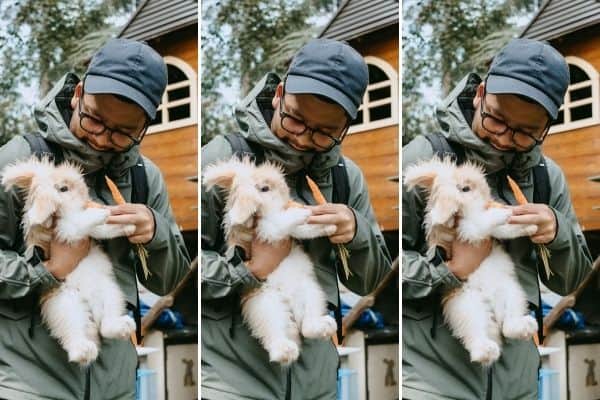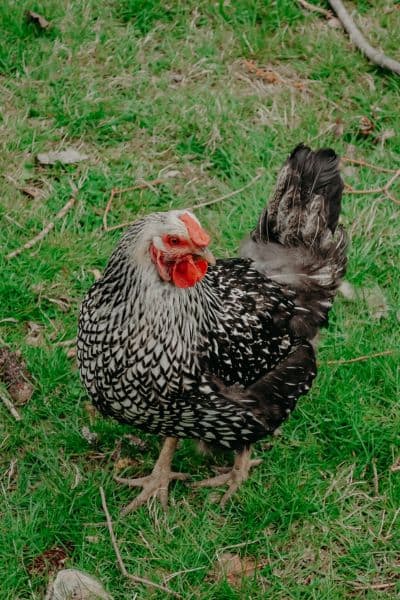9 Key Factors Affecting Rabbit Production In Your Rabbitry
It can be so frustrating to start your rabbitry and struggle to get successful rabbit litters. I am going to cover some of the key factors affecting rabbit production in your rabbitry.
Whether you are a commercial rabbit farm or are a small backyard rabbitry there are several areas you want to think about when it comes to figuring out what is affecting your rabbitry production.
Things like your animals’ age, genetics, housing condition, natural maternal behavior, and others will affect your rabbitrys overall production rate.
I tend to be a bit old school when it comes to running a rabbitry. This has served me well in a lot of ways keeping my rabbits healthy and producing well.
Watching the way the animals behave in nature to see where they are “coming from” in a sense will help break down the core issue and get to the root of the problem.
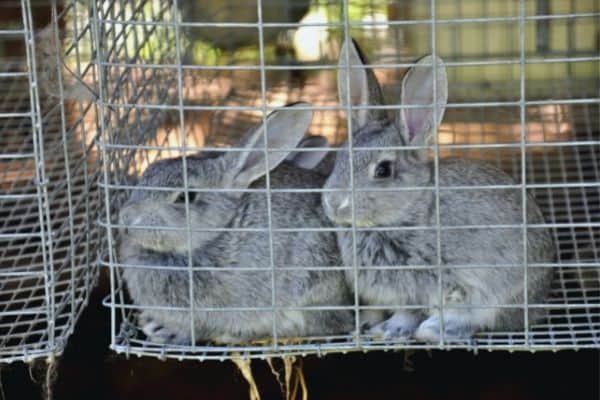
Light In The Rabbitry
Light is one of the things that I think is a huge factor that affects rabbit production.
Light is part of what tells nature when spring is coming. The days get longer and warmer telling the animals more food is going to be around and also a better climate to raise babies in.
If your rabbitry is housed in a barn and your cages are all packed inside. Your rabbits are going to be severely diminished in sunlight.
Most barns have no windows or hardly any so there isn’t much light getting inside.
Then to top it off if your rabbit cages are stacked on top of each other the ones on the bottom of the cage stack are not getting any of the residual light that is coming in.
Keeping them in this winterized mental state of lighting. Do you see many babies being born in the winter? Yep, me neither.

You may not be able to completely unstack all of your rabbit cages without having to reduce the number of your rabbits. So let’s try to add more lighting sources.
Get some heat lamps intended for poultry and add normal lightbulbs to imitate daylight. You can also put them on a timer so you don’t use so much electricity.
Try to keep the light on a large portion of the rabbits. Not right up close on one of them specifically. Or you will cause one rabbit to get overheated while the others will get no light at all.
Tools you’ll need
#1 Heat lamp socket: This is a great option to put a lamp in almost anything. The wires on the lamp help keep the lightbulb off of whatever it falls on if that happens.
#2 Indoor outlet timer: this will help you not forget to turn the lights on or off if you want to help save some electric expenses. Set the timer to go on for about 14hes a day and turn off the rest of the time.
#3 Outdoor Outlet Timer: This one would be ideal for a timer outdoor rabbitries.
Ventilation In Your Rabbitry
This is another piece that is missing in a lot of rabbitries causing poor production rates. While yes you don’t want your rabbits to get cold or damp you also need A LOT of airflow and ventilation to avoid stagnant air.
I don’t hide the fact that my rabbits are not housed in a barn and even if we had one I wouldn’t use it. There are so many breeders I have come across that have major health issues in their rabbitry. And the common denominator I see is because of the lack of ventilation.
My lean-to-style hutches with cages hanging inside work great. The rabbits have a three-sided shelter and I am able to put up tarps when the weather is bad. I have never lost a rabbit to respiratory issues with this setup.
Adequate ventilation will determine whether or not the rabbitry will be in good health and produce well. Inadequate ventilation makes the rabbits prone to many common respiratory issues such as pneumonia or sniffles.
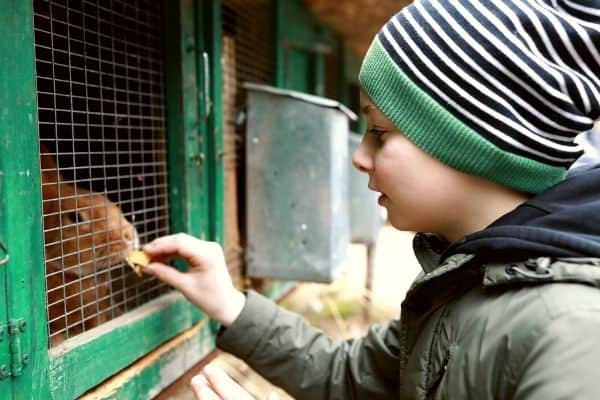
The only way to eliminate these diseases or at the very least prevent those diseases it’s by insuring the herd is through proper ventilation.
The ideal ventilation rate is a minimum of 10 total air changes in the housing area per hour.
Of course, that is pretty difficult to track and almost impossible for the backyard breeder. But just do your best with what you have. Stand in the middle of your rabbitry. What do you feel? Can you breathe easily? Is the air stale? Do you feel a nice shift in air occasionally?
This becomes very difficult when the facilities existing for other purposes are converted into rabbitries often times professional assistance is needed to make the necessary adjustments to allow for proper ventilation in the converted rabbitry.
Good ventilation is just as important during the winter as it is during the heat of the summer. I will talk more on this later but keep in mind that rabbits cannot tolerate temperatures in excess of 80 degrees with accompanying high humidity rabbits can tolerate higher temperatures when humidity is low as long as the air is moving about the rabbitry.

A blog post you should check out to learn more: Rabbit Housing Must-Haves For A Healthy Herd
Housing Condition In The Rabbitry
Whether you are trying to raise show rabbits or you are in it for rabbit meat production. A clean rabbitry is going to have a big reward when it comes to healthy rabbits. A domestic rabbit is very sensitive to things like poor air quality.
When you have individual cages stacked on top of each other you have to have trays to contain the waste or a self-cleaning system.
If you are using the common try method to control waste the poo and pee is right underneath the rabbit. Causing the ammonia and moisture to go straight up to the rabbit.
If the drop method of raise management is not an option I would recommend cleaning the try-out every other day to maintain a good housing condition.
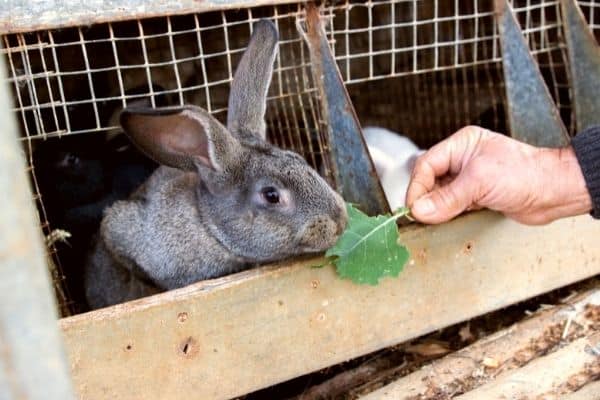
Individual Cages Vs Collective Cages
There are several issues with housing rabbits together.
- Other rabbits can kill the kits.
- Animals will fight with each other sometimes injuring another rabbit fatally.
- The more rabbits in one housing area the more health issues there will be.
- The animals will not be as physically healthy or fed as well causing their production to decrease.
- Poor monitoring of health status and offspring.
- Poor temperaments and bad behavior towards humans.
I could go on and on about why keeping more than one rabbit together is not a good idea.
Fewer Eggs Can Be One Of The Key Factors Affecting Rabbit Production
Rabbits are born with a certain number of eggs inside their ovaries and that is how many babies they will be able to have in their lifetime.
As a doe has more litter she will start to drop in the number of babies she has per litter. If a doe normally delivers 8 kits and she starts to drop to 6 kits per litter and eventually down to 4 then you know she is starting to be on her way out when it comes to production.

This can be a good key metric to track in your rabbitry. Because as I will get to in a minute. Rabbit genetics have a lot to do with how many kits they will have or if they are good mothers at all.
Keep track of how many babies she delivered AND how many litters she had. This can help in desition making when it comes to choosing rabbits to keep to grow your herd.
Rabbit Genetics
While the average rabbitry can’t look at the rabbit’s actual genetic code we can look at history and a rabbit’s family tree using pedigrees.
Then we can see patterns start to arise if we make notes and keep track of specific things happening in our herds. Giving us a clue as to what genetic characteristics could be passed on from generation to generation.
Here are some rabbit genetic characteristics I have seen passed down through the rabbits I have raised.
- Poor milk production in does causing them not to be able to feed as many kits.
- No maternal behavior or desire to take care of the kits at all. Causing whole litters to die.
- Does eating kits alive close to birth.
Heat And Sperm
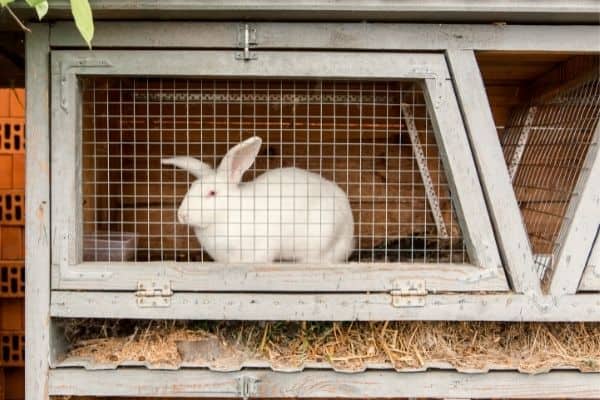
This one is for the sire.
Heat is not his friend when it comes to siring a litter. If it has been extremely hot you can almost assume that the sperm is not anywhere near the usual viability.
If the temperatures have reached 90 degrees or above for more than 24hrs you can assume his sperm isn’t good.
It is not the end of his breeding career though. You simply need to allow him to mate 3-5 times to “get rid of the bad stuff”. HOWEVER, it has to be back to cooler temperatures for this to work.
Meeting Nutritional Requirements
This can be a tough one because 90% of the commercial rabbit pellets have about the same products in them. But it can be something like how hot the grass hay was dried causing it to lose a lot of its nutritional value.
In turn, causing your rabbits to not get the nutrition they need to produce healthy litters.
Ideally you are looking for these numbers in your commercial rabbit pellets:
- 14-18% Protein
- 2-4% Fat
- 16% Fiber or more.
Environmental Conditions
Kits are born without fur and their eyes closed. Leaving them totally helpless and at the mercy of their environment. A normal doe with good maternal behavior will create a nest for her kits in the nest box that should have been provided for her.
Then as she gets closer to delivering she will pluck fur from her belly and or dewlap to line the nest with and help keep the kits warm.
This does well keeping kits warm for temperatures around 40 degrees and up IF the litter was large enough. If the temperatures are colder than that or there is dampness from snow or rain that can get into the nest you are going to have trouble getting the litter to survive.
Ideal environmental conditions for breeding and raising a litter is between 50-70 degrees. Buuut, since I don’t think anywhere in the world, has that kind of temperature all year long you simply have to do what you can with what you’ve got.

While these are a lot of serious issues facing rabbit farmers and producers they are fixable with the right methods. The key thing when raising rabbits is to solve one problem at a time and wait to see the results.
You want to be able to pinpoint the problem so you know what to do next time the issue arises AND to know if you are on the right track when it comes to solving your rabbitry problems.
Know of someone who could benefit from this information? Grab the link and share it with them.
